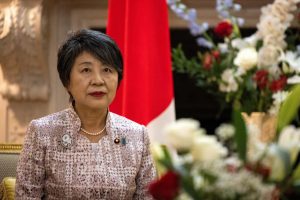In the vast expanse of China’s economic landscape, a tapestry of challenges is emerging, threatening to reshape the nation’s trajectory. This extensive exploration delves into the intricate interplay of demographics, pension systems, and consumption trends, offering a nuanced understanding of the potential economic crises that loom on the horizon.
I. Demographic Dynamics and Economic Repercussions:
The seismic shifts in China’s demographic landscape, meticulously scrutinized by experts such as Xiujian Peng from the Centre of Policy Studies in Melbourne, portend a slowing economic growth trajectory. The impending departure of a staggering 300 million individuals aged 50 to 60 from the workforce over the next decade, equivalent to almost the entire U.S. population, is poised to strain pension budgets already teetering on the brink.
The ominous predictions from the Chinese Academy of Sciences paint a grim picture, forecasting the exhaustion of pension funds by 2035. This looming crisis is exacerbated by China’s distinctly low retirement age – 60 for men, 55 for white-collar women, and 50 for female factory workers. Against this backdrop, an unprecedented 28 million people are slated to retire this year, amplifying the challenges of sustaining pension systems to unprecedented levels.
II. Pension Predicament and Societal Impacts:
The low retirement age in China not only casts a shadow over pension systems but also plunges millions of retirees, exemplified by the poignant narrative of Li Zhulin from Shaanxi province, into a mire of financial uncertainty. The ripple effect of such uncertainties extends beyond individual households, posing potential strains on families and the broader societal fabric.
Traditionally, Chinese society leaned on the familial support structure, expecting children to shoulder the financial burden of their aging parents. However, the tide is turning as rapid urbanization disrupts this age-old pattern, leaving more seniors reliant on self-care or government assistance. The imminent demographic shift, characterized by a diminishing ratio of workers to retirees, threatens to evolve into a humanitarian crisis with profound societal ramifications.
III. Shifting Consumption Patterns and Economic Ramifications:
The ebb and flow of China’s economic tide are further influenced by the evolving patterns of consumption. The second-largest demographic cohort, comprising approximately 230 million individuals aged 30 to 49, stands at the precipice of a prime consumption period. However, the inexorable march of time dictates that as this cohort ages, their participation in domestic consumption is destined to wane, potentially casting a shadow over sectors like real estate.
The reverberations of this demographic phenomenon extend to China’s property sector, once a stalwart contributor to economic output. A precipitous downturn in 2021, driven by over-leveraged developers and an oversupply of apartments, draws ominous parallels to Japan’s economic struggles in the 1990s. This complex confluence of factors portends challenges for China’s economic resilience in the foreseeable future.
IV. Innovation Conundrums and Productivity Challenges:
The aspirations of China to remain at the forefront of global innovation encounter formidable challenges in the form of an ageing workforce. While the redirection of credit flows from property to manufacturing has been a strategic move to elevate industries along the value chain, the specter of an ageing workforce looms large. Larry Hu, the Chief China Economist at Macquarie, postulates that diminished incentives to innovate may lead to a deceleration, rather than an acceleration, of productivity improvement.
Conclusion:
In this intricate tapestry of challenges, China finds itself at a crossroads, where demographic shifts, pension crises, evolving consumption patterns, and innovation challenges converge. The nation must navigate these complex issues with strategic precision to ensure sustainable growth and avert potential pitfalls that cast shadows over its economic future. As the international community watches with bated breath, China’s response to these multifaceted challenges will undoubtedly shape the narrative of its economic journey in the years to come.
















Comments